Amusement Park Accidents
A Guide to Staying Safe and Knowing Your Rights in Amusement Park Accidents
Amusement parks, county fairs, and carnivals captivate the hearts of millions each year with their exciting rides and attractions. From the enchanting Disneyland to the thrilling Six Flags, these parks promise adventures for everyone. Not just the permanent parks, but local carnivals, school events, and even private parties with inflatable slides and bounce houses, all serve to make our days brighter.
However, as with any adventure, there’s a flip side. In rare instances, the excitement may take an unpleasant turn due to accidents that can result from malfunctions in the rides. Such malfunctions might be due to various factors including faulty operation, maintenance, design, or construction. Understanding the types of injuries and knowing your rights can empower you to handle such situations efficiently.
Common Injuries in Amusement Park Accidents
Injuries can range from mild to severe. They include cuts, bruises, broken bones, or even the loss of limbs. In extreme cases, one might suffer paralysis or fatal injuries. Often, the causes can be attributed to defective safety measures, inadequate instructions, or ride malfunctions.
Navigating the Legal Maze
Laws related to amusement park injuries are quite intricate. The legal responsibility, often known as "liability," can depend on various factors like whether the ride was stationary or mobile, a part of a permanent amusement park, a local fair, or a private event. The expertise of a seasoned personal injury lawyer can be invaluable in such scenarios.
Assumption of Risk
When you partake in exciting activities, there is an inherent “assumption of risk” involved. This implies that by voluntarily participating, you recognize that there might be some hazards. However, it is essential to understand that assuming risk does not mean that amusement parks are exempt from responsibilities. They are still obligated to ensure the safety and well-being of their visitors.
When to Seek Legal Recourse?
You may have a claim if your injury is a result of defective rides, poorly trained staff, or insufficient safety instructions. In such cases, amusement parks, carnival operators, or manufacturers may be held accountable.
Understanding Negligence and Respondeat Superior
• Negligence: To establish negligence, it must be shown that the defendant owed a duty to the plaintiff, this duty was breached, the breach led to injury or death, and the plaintiff suffered a loss. Examples include failure to warn, maintain, inspect rides or properly train employees.
• Respondeat Superior: This doctrine implies that an employer is responsible for the actions of employees performed within the scope of their employment. Examples include not providing instructions to riders or improper operation of rides.
Taking Action Post-Injury
Should you find yourself injured in an amusement park accident, it is crucial to seek medical attention immediately. It's also imperative to contact an experienced personal injury lawyer to investigate the scene and gather evidence.
Let’s Sum It Up
While amusement parks are the harbinger of joy and thrill, it’s wise to be informed and vigilant. If you or a loved one has been affected by an amusement park accident, do not hesitate to seek the justice and compensation you deserve.
For expert legal advice, contact injured.com at (888) 845-8888. Their experienced team is committed to supporting and guiding you through this trying time.


